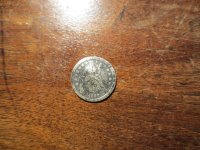FlyingProspector
Jr. Member
Hey everyone, I was hoping for a little guidance in the coin world here. So for some reason I decided to go through a bunch of change I have here at the house and I came across some 60's quarters, 50's nickels and a few 40's wheat pennies. A quick google search on a 1966 quarter informed me that it is worth between $1 and $8 depending on condition, but at minimum it's worth a dollar. My question is this, is this true? And how old does something have to be in order for it to be worth more than face value? And what should I keep an eye out for and what's worth keeping? Thanks for the help!
Upvote
0










